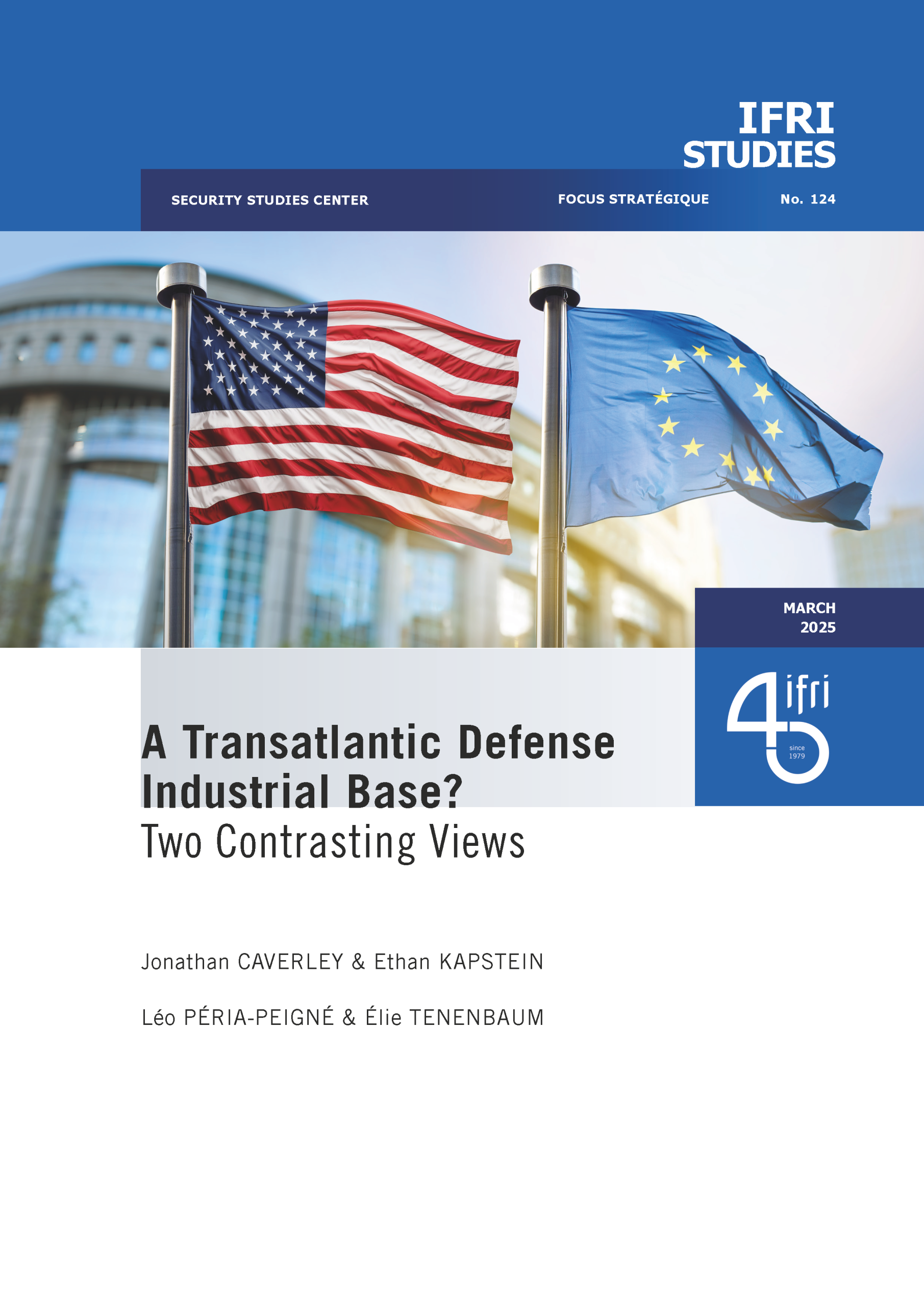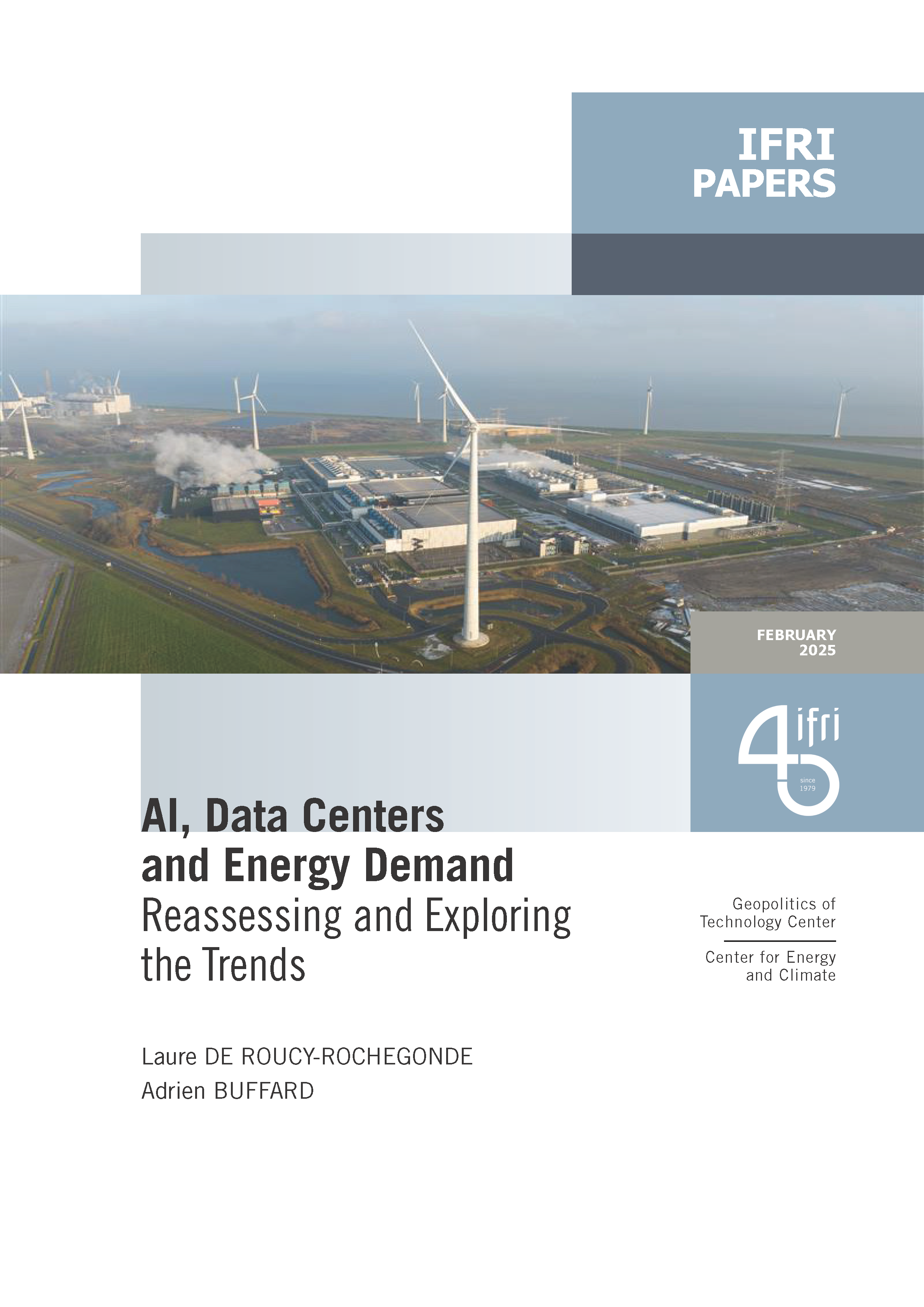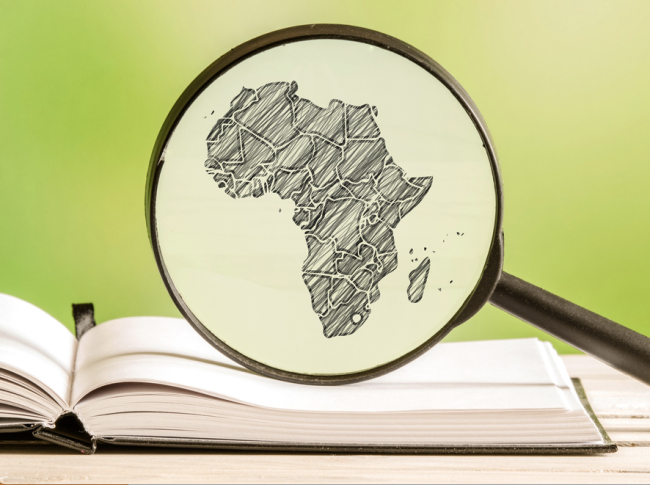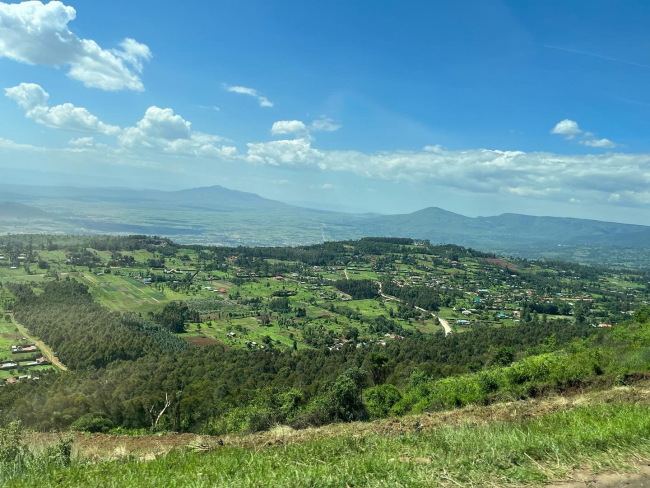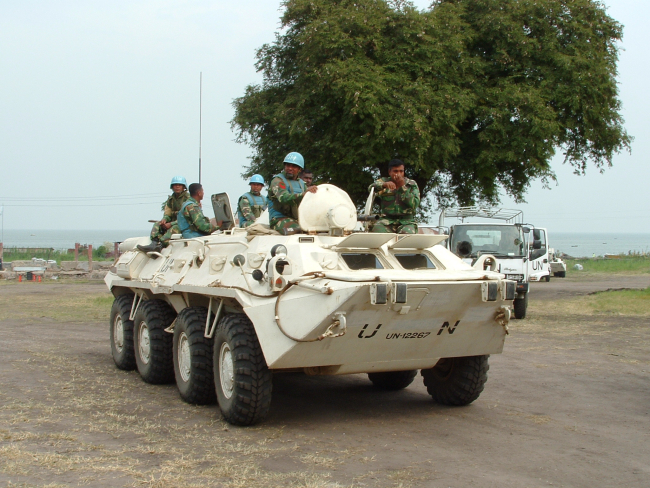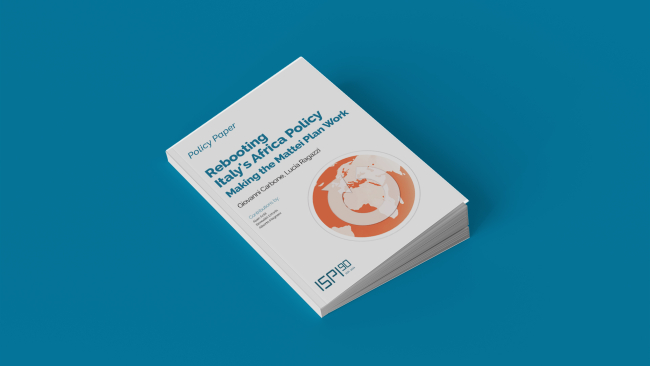Kenyan Crisis: Interview with Hervé Maupeu

The recent violence that ensued in Kenya has taken many commentators by surprise. The appearance of stability and economic progress that the Eastern Africa country had built around a supposed successful democratic transition, just imploded. In this interview Hervé Maupeu, Head of the CREPAO and expert on electoral mobilization issues, discusses the current crisis. He details the deep political, social, economic and land divisions which have ripped Kenyan society apart.
The recent violence that ensued in Kenya has taken many commentators by surprise. The appearance of stability and economic progress that the Eastern Africa country had built around a supposed successful democratic transition, just imploded. In this interview Hervé Maupeu, Head of the CREPAO and expert on electoral mobilization issues, discusses the current crisis. He details the deep political, social, economic and land divisions which have ripped Kenyan society apart.
Sylvain Touati : Did Mwai Kibaki win the presidential elections ?
Hervé Maupeu : No, but it is difficult to demonstrate that Raila Odinga won. In the revealed results in numerous districts, there are too many distortions between results in the general elections and the presidential elections. Let's remember that it was an electoral process where the voters chose the President of the Republic, their representatives and the local councilors at the same time. It is possible for voters to choose a local representative that belongs to one party, yet vote by a large majority for a presidential candidate that belongs to a different one. However, these results can be judged as disturbing when, in the same place, the number of voters in the legislative election is lower than the voters in the presidential election. It is even more problematic when voters in the presidential election are more numerous than the number of people registered to vote. In brief, deceits are obvious and a report by European observers, which will soon be published[1], should give a rather exhaustive list of the incoherent voting numbers.Nevertheless, it seems difficult to proceed to a new vote count because numerous official statements were forged or lost. Certain ballot boxes would have disappeared. The government has done its best to make organizing a new vote count impossible.
ST :How did the electoral campaign take place ?
HM : Almost correctly if you compare it with Kenyan standards. With hindsight, it would appear that the 2002 election campaign appeared atypical in Kenya's democratic history. Indeed, the political actors respected the rules of the democratic game: we recorded little electoral violence, the administrations remained relatively neutral, the media did not undergo censorship, the practices of purchase of vote dropped... So many characteristics that we did not find in 2007. This last election campaign reminds me more of the elections of the 90s when the President Daniel Arap Moi's absolute dictatorship used all means possible to hang on to power.In 1992, like in 1997, ethnic cleansings guaranteed an easy re-election for the leaders of the Moi regime. In 2007, we did not witness pre-electoral ethnic conflicts. But within the framework of the election campaign, violence was widespread, causing, according to human rights associations, several dozen deaths. Furthermore, ethnic tensions resumed in the usual crisis zones in Rift valley (Molo, nearness of Eldoret and region of the Mountain Elgon on the border with Uganda). Besides, the repression of a neo-traditional gikuyu sect, Mungiki, provoked the massacre by the police of at least 500 young people between June and October 2007. We have to include these executions in the electoral violence because the repression against these militias of young people would not have been so bloody if the government had not considered Mungiki as an unbearable opposition in their own gikuyu community[2].The 2007 election campaign was also tense because of the systematic use of the administration in favor of the PNU candidates. In particular, the prefecture administration showed itself partisan by preventing certain opposition meetings and by covering up the excessive exaction and violence of those close to people in power. Furthermore, public liberties were weakened : the media underwent censorship ; Muslim populations felt persecuted by the implementation of new anti-terrorist measures during the electoral period.So, the 2007 election campaign was tense. On the other hand, the ballot took place correctly (contrary, for example to the1997 elections). It is when the vote count took place that things deteriorated.
ST : What is the nature of the relationship between Kibaki and Odinga? What are their points of dissension ?
HM : In 1992, like in 1997, the opposition lost the presidential elections. The problem was that opposition parties went to the elections divided. Added, the number of votes of the different opposition candidates were superior than the representative of the KANU (the party in power since Independence from 1963 to 2002). In 2002, opposition succeeded in forging an alliance and getting along on the name of a unique candidate, Mr. Kibaki. This union of the opposition was largely the result of the savoir-faire and the tactically skills of Raila Odinga who hired former KANU leaders (such as the vice-president Saitoti, as well as formers Ministers as William Ole Ntimama or John Kamotho) and managed to make Mwai Kibaki the opposition candidate.At this time, Kibaki was perceived as the man of compromise. This moderate politician was considered too old and too sick to seek more than one term in office. It was the reason other competitors in the opposition agreed to disregard their presidential ambitions and to work in his favor. From then on, an agreement was signed between various wings of the opposition. This agreement set out the distribution of ministerial posts and the measures that the new regime had to set up. Once elected, Kibaki ignored this agreement. The parties close to Odinga did not get the planned number of ministries. Notably, the promised constitutional reform was not implemented. For several years, the government delayed it and in 2005 finally proposed a constitutional text that differed greatly from the original project. During the referendum, this text was rejected. Odinga's camp, which called for its rejection, won by a large majority. This victory confirmed the definite and clear divorce between both leaders.
ST : How did the presidential candidates' policies differ from each other during the 2007 campaign ?
HM : The three main presidential candidates, Odinga (ODM), Kibaki (PNU) and Musyoka (ODM Kenya) have very different programs and socio-economic projects. Odinga and Musyoka have similar programs but base them on different ideologies and theoretical foundations. Raila Odinga promised to implement the 2002 constitutional reform (we could even say it existed from as far back as 1997) in the first 90 days of his mandate. It would essentially aim to increase decentralization (60 % of the public money would be allocated to regional and district administrations), limit executive powers in order to facilitate the development of a real parliamentary form of government. Naturally, Odinga also denounces government corruption and promises that fruits of the economic growth will be more fairly redistributed.Kalonzo Musyoka recommends a less developed decentralization strategy than Odinga and he shows more reserve towards a parliamentary form of government. The original part of his program is the promise to create a Welfare State. He presents himself as a social democrat, convinced that the Kenyan economy is capable of financing a real social welfare. He wishes to appear as the defender of the middle classes, who in his estimation could become the country's main social class.The outgoing president Mwai Kibaki has to defend his rule. He can present the success of the compulsory and free primary educational program. He also benefited from an about 5 % a year economic growth, while the previous decade, with Daniel Arap Moi's presidency, was marked by a deep recession and a very poignant ' State criminalization[3]'. The kleptomania of the Moi era has been replaced by a less corrupt government during Kibaki's term, nevertheless some key government officials have been implicated in financial scandals. There has been a reduction in large-scale corruption (probably because of the media attention), but minor corruption is prospering and rots the everyday life of the wananchi (citizens). In these conditions, Kibaki can promise a 'clean' government' but he finds it difficult to appear convincing. In 2007, the main part of his program focused on free secondary school education and an improvement of public services. He announced the creation of numerous jobs connected to economic growth but contrary with 2002 context, he did not put forward any figures because he has not fulfilled the promise he made in 2002 to create half a million posts.
ST : Can the current situation with Kibaki as president and Odinga's party heading the parliament work ?
HM : Odinga's party managed to elect one of its leaders as speaker of the parliament. But the ODM do not have an absolute majority. With 99 Members of Parliament out of 210[4], it holds 47.14 % of the seats compared with the PNU (43 seats), ODM Kenya (16), KANU (14), SAFINA (5), NARC Kenya (4). Finally, 17 other parties won between one to three districts[5].In the current political system where the executive holds the majority of power, Kibaki's team can govern the country even if their party, the PNU, holds only about 20 % of parliamentary seats. It thus has to negotiate agreements with the other parties. By appointing K. Musyoka as Vice-president, Kibaki gained the support of ODM Kenya. Another alliance of small parties has already negotiated a merger with Kibaki's government. All the Members of Parliament know that it's a convenient moment to discuss a strong position with the regime. They can easily raise money to pay off the expenses incurred by a particularly expensive campaign. Furthermore, the State tends to invest only in the districts where a member of the government party had been elected. And because of this, we can expect to see some ODM deputies move to the Kibaki camp.So, the President can negotiate coalitions. It is expensive for the Treasury but it worked quite successfully for the majority of Kibaki's first term. Kenya's institutions allow this way of operating. But is the current political crisis drastically changing this habit ? With the scale of post-electoral violence and thus the deepening of the political cleavages, alliances are harder to form. Although it is still too early to see how things will play out.
ST : Can you describe the election count and the violence which took place after the elections ?
HM : For the needs of this analysis, we can distinguish at least two types of post-electoral violence. On one hand, there is the ethnic cleansing, which is a vast category covering diverse and not always comparable phenomena ; practices which also provoke counter-violence on behalf of the assaulted populations. On the other hand, the police violence has also caused a large number of deaths. We hesitate to suggest that these actions have been planned, nevertheless, such scale of violence can not be accidental.At first, if we look in detail at the deaths caused by police forces, it emerges that the government expected unrest connected to the election announcement. Strong concentrations of policemen, with orders to fire with real bullets, were already in place in certain cities. From the very beginning of the crisis, the police massacred several dozen of youths in the streets of Kisumu[6], the fief of Odinga. Nairobi's slums were rapidly becoming the place of brutalities and slaughter on behalf of security forces. The repression of Mungiki during the summer 2007 trained these forces to organize assaults in the capital's slums. The police violence was all the more intense as policemen were assured they would not be pursued judicially. Throughout the Kibaki era, they benefited from impunity even though their practices were increasingly denounced[7]. In fact, since the presidency of Daniel Arap Moi, police members developed a professional culture of excessive and mindless violence. During the Kibaki regime, they continued to work as tools of an autocratic power, even if on the surface things appeared democratic. So, in 2006, an office was established to report complaints regarding police abuse. None of these complaints resulted in any action, even when there was substantial proof.The ethnic cleansings did not begin in 2008. They aim at expelling certain populations from certain districts. At a basic level, it is the strategy of a political elite which perceives these methods as an adaptation to the return of the multiparty system. The feeling of invasion felt or taught in certain communities tends to legitimize this practice. Indeed, certain lineages perceive themselves as the true autochthons threatened by non-natives who will steal their rights from them, the land or their prosperity. On this ideological compost, tensions develop and become more marked in an electoral period because certain populations are seen as benefiting from privileges because of their supposed closeness to power.If we go into further detail regarding the origin of the 2008 tensions, we notice that the crisis in the Mountain Elgon region (Rift Valley on the border with Uganda) has been particularly intense for at least two years. Throughout 2007, the conflicts between these communities provoked numerous deaths. The elections fed these antagonisms but were not the cause. Soon after the election results were announced, the first fires and massacres appeared around Eldoret, then in the Molo region. Just like in the 90s, gangs of youths, probably financed by politicians, have been transported to these zones to attack Gikuyu families. These regions of the Rift Valley were the heart of colonial ' white lands '. The white farmers had monopolized these fertile lands and had made it the country's cereal attic. Their manpower was often constituted by Gikuyu families who came as squatters because there was not enough available land in the Central Province where they used to live[8]. After independence, Whites farms were often bought back by rich Gikuyu close to Jomo Kenyatta's regime or resold after having been divided up to small farmers often coming from the Kenyan Mountains, but not exclusively to them. These immigration waves were seen as an invasion by the Kalenjin populations who perceive themselves as the region's natives[9].The ethnic cleansings of the 90s, which was not exclusive to the Rift Valley, would have provoked several thousand deaths and displaced about 500 000 people[10]. Most of these families did not return to the regions which rejected them. However, the internal migrations did not stop and the Rift Valley remained the destination for numerous people in search of success or more often, survival. Even within the Kalenjin populations, there was a lot of migration. Therefore, we have zones where people do not really know each other and certain sociologists would easily define the situation as one of anomie. It discourages solidarity between neighbors and leads to easy manipulation of gangs of youths.But these conditions are not sufficient by themselves to provoke ethnic massacres. The privatization of the security sector in almost all the country and a youth militia culture are also contributing factors. For about at least twenty years, insecurity has become a major problem in many regions. The impotence or passivity of security forces, has led communities to turn to organized militias to limit criminality. These militias are often supported by the prefecture administration[11]. At the beginning of the 90s, militias developed within Nairobi's slums, then within other cities in the country. In a grave economic crisis and an unbalanced demographic situation, where those under 40 years make up the large majority, youths feel they have to join these militias which create rare jobs opportunities. But these groups are more or less controlled by their various sponsors who can in some cases be the district storekeepers and in others : politicians who need to ensure security at their meetings. So, numerous youth gangs have often transformed into Mafioso organizations who rob the communities where they are based. In such a context, the politicians wishing 'to clean' their district can easily hire the services of these 'ready to do anything for cash' young people.
ST : Was the post-electoral violence predictable ? Could it have been avoided ?
HM : Kibaki's team knew that the manipulation of the electoral results would bring about a reaction. Among opposition leaders, are several people involved in the 90s ethnic massacres. Furthermore, Odinga and Fred Gumo control Nairobi's toughest militias. The outgoing parties probably have the fidelity of police forces and Army. Reinforced with this support, they hope to silence the opposition.Kibaki's refusal to give up power provoked a blood bath and the deepening of cleavages which threaten the idea of Kenyan citizenship itself within an African country where national identity was strong in spite of the ethnicisation of the political life, especially since the return to the multiparty system in 1992. Political analysts who comment on the current crisis have no difficulties in tracing the deep roots of the crisis. Although few specialists would have predicted the scale of the violence. The successful change in power in 2002 made some believe that democratic culture was real and sincere within the political class.
ST : Can you detail the reasons why the police and Army have given their support to the outgoing president Kibaki ?
HM : The army has never played an important political role in Kenya's independent history. At the beginning of the 60s, an army uprising was defeated by the British troops who remained in the country after the Independence. It convinced Jomo Kenyatta[12] to constitute a modest and politically silent army. Nevertheless, in 1982, non-commissioned officers of the Air Force stirred up an awkward coup attempt. It allowed the government to purge this institution but also to professionalize it, by improving training courses and by promoting the men according to their merits and not because of their proximity with any political networks. Since then the army (about 45 000 men) is particularly disciplined and legitimate.Until now, the government did not use the army often to calm tensions in the West of the country. It has used some battalions to take food to refugee camps as well as to destroy certain roadblocks. Human rights associations and the media denounced violence committed by soldiers. Yet, the management of the law and order is primarily the responsibility of police forces.President Moi's dictatorial regime often used security forces while maintaining a level of distrust towards them. Following the old principle divide and conquer, police forces are divided into several services which have, in principle, different functions. The largest security workforce is within the Kenya Police. Its 18 000 members are badly paid and have difficult living conditions (with notably dilapidated housing). They survive because of the corruption which is widely tolerated by those in power. In the countryside, we find the Administration Police (AP) which is under the orders of the District Commissioners (the prefects). These police officers are often recruited as a result of the intervention of local 'big men'. They are badly formed and do not perform their duties appropriately.Since 2002, Kibaki's regime has maintained its control over the hierarchy of these administrations. The government especially ensures the elite troops' fidelity. The infamous General Service Unit (GSU) (about 5000 persons) has troops trained in Israel. These paramilitary troops are known for their extreme violence. They are well paid like the Criminal Investigation Division's (CID) members who specialize in counter-terrorism, or Kenya's National Security Intelligence Service (NSIS), the secret service. All these services receive orders from the Office of the President or are under the direct orders of the President (it is the case of the CID). Thus, no police force is put under the authority of the Home Secretary or the Minister for internal Security. Kibaki has direct controls over all the different security forces, from which he expects fidelity. Fidelity which at present has remained consistent.
ST : The expression 'Mount Kenya mafia' is used in some commentaries to describe the support given to the outgoing president. Can you give us more information about it ?
HM : This term makes reference at first to the 'camarilla' which surrounded Jomo Kenyatta in the 70s. The old leader was sick, very weak and the country was governed by this small team made up of Kenyatta's family members and some other leaders. We attribute many wrongdoings and political blows under the belt to the group. The expression appeared again in 2003, when a small group around Kibaki became more visible and apparently more powerful. It consisted of the Head of State's wife as well as his second wife (unofficial but very involved in the gikuyu political life), one of his sons, nephews, politicians of his generation (John Michuki[13] and Njenga Karume[14] in particular) as well as some high-ranking servants and younger Ministers (notably Martha Karua[15]). Most of them were involved in the biggest corruption scandal of Kibaki's first term, the scandal of Anglo-Leasing Cie. So, these 'big men' are accused of only concentrating on becoming richer. They are also suspected of governing the country instead of the elderly leader who is often sick.
ST : How do you define Mungiki ? How are its members used politically ?
HM : Mungiki is a prophetic neo-traditional Gikuyu movement. The Gikuyu political culture produces numerous prophetic movements, especially during times of crisis. Mungiki probably appeared in the 90s, in the context of the Rift Valley ethnic cleansings. This sect welcomed many youths who were displaced during the events and these youths have made the group well known in all Gikuyu cities. Mungiki is very popular with underprivileged populations because it proposes a vision of the Gikuyu society where young people perform a clear and valued social role. It explains the youths' current situation in the context of a partly-mythical history of the whole Gikiyu community. It gives them roots, common historic and militant backgrounds and finally methods. So Mungiki clearly thinks of itself as the heir of the Mau Mau movement, perceived by many Kenyans as an independence war against the British. The sect founders arise from the families of famous Mau Mau generals.' Mungiki thinks of itself as having a political role to play. This worries Gikuyu politicians who are afraid of seeing large sections of youth escaping their control. It is even more worrying for them that all ' Central province[16]' politicians know Mungiki well. For about ten years, they had used the services of Mungiki's youths to watch over their meetings or ensure the political fidelity of a district.Indeed, one of the reasons (and not the least) of Mungiki's success is because the movement, through militias, offers jobs or at least informal sources of income to a lot of young people. In as far as the sect controls (some people may say ‘rob') many lines of matatus (the minibuses which constitute the main part of the public transport) and several of Nairobi's slums where they charge for electricity supply, the management of the public toilets and regulate security. So, Mungiki is a militia like many other militias, but it is the one that has had the most success[17].
ST : Is Mungiki actually utilized by the gikuyu elite to counter massacres organized by some of the opposition's militias?
HM : According to currently available information, this is a difficult question to answer. But as indicated previously, Mungiki was seriously persecuted during summer of 2007 (at least 500 deaths) and human rights associations consider that since 2002, about 8 000 young people, in particular Gikuyu, have disappeared. In these conditions, does the government know how to re-establish the contacts with a movement which they fought against so strongly? Since the second half of January, we have seen bands of young Gikuyu people commit murders otherwise massacres, in particular in Nakuru and to Naivasha[18]. It is not necessarily Mungiki that committed these atrocities. There are other Gikuyu militias, some ancient and large. The Mungiki model spurned many new spin-offs.
ST : What are the positions of the religious movements towards this crisis (Christians, Muslims) ?
HM : In 2007, the Muslim population widely voted against Kibaki. On the Coast, the PNU only gained 3 seats while the ODM holds 12 out of 21 districts. The second Muslim fiefdom is the ' North Eastern province '. Out of 10 seats, the PNU gained none while ODM has 5 deputies and the KANU (a party close to the PNU) has 4.Many factors have played a role in this. First of all, Muslims tend to consider themselves as relegated citizens disliked by those in the capital, systematically forgotten when it's time to invest state revenue. This feeling tends to turn into a persecution when implemented anti-terrorist laws seem to target only the same Muslim populations. It seems that certain arrests, as a result, are particularly arbitrary. Also, certain communities complain about the way the political elite manage land. In 2002 and 2005, Kibaki's team promised land titles on public land to squatter families who have lived there, often for several generations. Naturally, the promises were not kept and certain families were even expelled because some land was given to entrepreneurs or real-estate agents.On the Christian side, we need to make a distinction between the different Churches. One of the most influential is the Roman Catholic Church (between 20 and 25 % of the Kenyan population). It supported Kibaki during the presidential election and at the local level, numerous priests campaigned in favor of the PNU (the PNU's primary often took place in its buildings and were sponsored by the parish). After the elections, the prelates denounced the ethnic cleansings attributed to the opposition, and rarely focused on massacres committed by policemen.On the Protestant side, the high hierarchy of the Presbyterian Church militated clearly in favor of Kibaki, which is not surprising for a religious organization which is quasi-exclusively Gikuyu. Methodists who are based mostly in the ' Central Province ', also supported the PNU but they were more discreet. The Anglicans have believers in the whole of the country and they cannot take an open stand. However, the bishop of Kisumu clearly took the position in favor of ODM and denounced the police brutality in his city. Finally the Pentecostal and the fundamentalists rather favor the opposition.
ST : Was Kenya's description as a stable, democratic and economically developing model country a reality mirroring everyday life of its people ? Is the Kenyan State recognized throughout the country ?
HM : Until now, the Kenyans perceived their country as a stable country, at least compared to the conflicts which have plagued all the nearby countries with the exception of Tanzania. But at the same time, they see themselves as a particularly violent society. We've seen it, insecurity is rife throughout the country. Last June, colleagues of the University of Nairobi explained to me that they could not sleep at their relatives' homes. When they went to the countryside, they stayed in hotels in administrative towns because at night, the risks were too great at their relatives' farms.Violence is also present in the working environment. The amount of paid employment is insufficient and even graduates have difficulty in finding and keeping a job. So, the country's economic development model does not encourage numerous Kenyans who have noticed that economic growth benefits only some parts of society and in particular the richest. So, serious statistics (notably those of the UNDP) show that the number of Kenyans living with less than two dollars a day has increased since the beginning of the millennium even if the country has seen an economic upturn.In these conditions, the State is not recognized as a neutral institution, which funds public services and serves the general interest. Indeed, Kenyans are particularly aware that politics is one of the surest methods of personal enrichment. High ranking state officials do not inspire confidence (trust). Rather they are seen as devils that must be tolerated. The politicians create more problems than they solve. Corruption touches high ranking officials but also various administrations. Nevertheless, the Kenyan State remains one of the most successful in Africa. Health services suffer from a lack of medical resources and medicines but the staff are well trained. The educational system works properly, from primary school level to universities. For all that, this State is essentially present in the so-called 'useful' Kenya which is generally situated in the mountains (over 1300 meters in height). The suburbs of the country which are often desert zones, are widely neglected. In cities, the State is visible in the inner cities but shines with its absence in the slums, notably in Nairobi's shanty towns which house the majority of the urbanized population.
ST : What scenarios can end this crisis ?
HM : We are still in a period of rising tensions and it is difficult to discern the dynamics that will put an end to the crisis. Until now, those in power diplomatically rejected the international mediation attempts : the American under-secretary of State for Africa, Jendayi E. Frazer's mediation attempt was kindly sent back for being suspected as being too partisan (in favor of the opposition) ; The outgoing African Union president, John Kufuor, was rebuffed, and even suffered from a little diplomatic humiliation ; Kofi Annan's mediation is apparently better accepted but until now, he has not achieved any major headway and the massacres continue with a renewed intensity.Also, the internal attempts at mediation seem to go unheard. Until now, J. Kiplagat's team, a diplomat and one of the most respected politicians in the country, has kept a low profile. As for the civil society, which is important in Kenya, it remains split.
[1] To not appear as partisans during this crucial negotiation period, the European representatives are not releasing a report which is overwhelming against Mr Kibaki's camp.
[2] President Kibaki is Gikuyu. Gikuyu represents about 20 % of the Kenyan population. Gikuyu constitutes, with Luo, the only ethnic group of the country who developed a real ethnonationalism. During the general elections, Gikuyu members of government had difficulty to accept the contesting of certain young people of their own community.
[3] J.F. Bayart, Criminalisation de l'état en Afrique, 1999, Editions Complexe, Paris.
[4] In fact, 97 representatives since two ODM's Members of Parliement have been shot during the crisis.
[5] Official sources from the Office of Government (www.communication.go.ke/elections/constituency.asp).
[6] Third biggest Kenyan city after Nairobi and Mombassa.
[7] Oscar Foundation, License to Kill. Extra-judicial execution and police brutality in Kenya , 2007, Nairobi. Even States institutions like the Kenya National Commission on Human Rights have strongly criticized police practices : KNCHR, Preliminary Report on Alleged Executions and Disappearance of Persons between June and October 2007, 2007, Nairobi.
[8] Molo was during the 50s Mau Mau war the home of intense guerrilla warfare. Numerous Gikuyu squatters rebelled against the farmers who soon mechanized and did not need as much manpower.
[9] John O. Oucho (Undercurrents of Ethnic Conflict in Kenya, 2002:64,Brill, Leiden) clearly explains the situation: " The predominance of the Kalenjin in Rift Valley Province is a myth as census figures verify. The province was home to some 19.3 percent Kikuyu, 9.7 percent Luhya, 7.3 percent Maasai, 5.2 percent Turkana and 3.9 percent Luo - a total of 45.4 percent non-Kalenjin population in the 1989 population census. This explains why the Kalenjin tend to be hypersensitive about the non-Kalenjin whom they refer to as " invaders " as the non-Kalenjin claim an increasing stake of the provincial population. Clearly, this feature is a recipe for political wrangling and ethnic clashes in Rift Valley Province ".
[10] Jacqueline M. Klopp, " Kenya's Internally Displaced : Managing Civil Conflict in Democratic Transitions " in Dorina A. Bekoe (Ed.), East Africa and the Horn. Confronting Challenges to Good Governance, London, 2006, p. 59.
[11] Within Kuria populations, Sungu Sungu militias worked for a long time in opened collaboration with security forces. On the Ugandan border, the administration equipped certain Pokot groups. It provoked strong tensions with Marakwet communities.
[12] Kenya's Prime Minister from 1963 to 1964, then President of the republic (1964-1978).
[13] Born in 1932. Minister of roads and public works since January 8th, 2008. From 2002 till 2007, he occupied the job of Minister of Transport and the Communications (12/2002 - 12/2005) then of Minister of the Internal Safety (Security) (12/2005 - 8/01/2008).
[14] Born in 1929. Minister of Defense from December, 2005 till January 8th, 2008.
[15] She is the current Justice and Constitutional Affairs Minister.
[16] Geographically his administrative district covers the Mount Kenya's region.
[17] Some other Kenyan militias : Jeshi la Embakasi, Jeshi la Mzee, Bagdad Boys, Sungu Sungu, Amachuma, Chinkororo, Dallas Muslim Youth, Runyenjes Football Club, Jeshi la Kingole, Kaya Bombo Youth, Sakina Youth, Charo Shutu, Uzacha Boys, Kosovo Boys, Banyamulenge and KamJesh.
[18] Cities in the North-East of Nairobi.
Related centers and programs
Discover our other research centers and programsFind out more
Discover all our analysesAnglo-Kenyan Relations (1920-2024) : Conflict, Alliance and a Redemptive Arc
This article provides an evidentiary basis for postcolonial policy in its analysis of Anglo-Kenyan relations in a decolonization era.
When City Diplomacy Meets Geopolitics: A Framework to Help Cities Navigate Geopolitical Risk
Crises and the increasing polarization of international relations make political risk analysis an indispensable resource for internationally active public and private entities.
The United Nations Mission in Congo or the exemplary uselessness of the United Nations peacekeepers
During the M23 conflict in 2012-2013 in the Democratic Republic of Congo (DRC), the United Nations (UN) took the diplomatic initiative (by initiating the Addis Ababa agreement) and the military initiative (by launching a coordinated counter-offensive with the Congolese army). Since the resurgence of this conflict in 2022, the United Nations, which still has more than 10,000 peacekeepers deployed in eastern DRC, no longer plays any role.
Rebooting Italy's Africa Policy: Making the Mattei Plan Work
Against the backdrop of increasing anti-French rhetoric across parts of Francophone Africa, the relative failure of the counterinsurgency operation in the central Sahel (Operation Barkhane) and diplomatic rifts with several Sahelian countries, Paris has been rethinking its relationship with the continent for several years now. As a former imperial power that has seen its colonial domain in Africa gain independence between 1956 (Morocco-Tunisia) and 1977 (Djibouti), France has invented two successive roles for itself in Africa since 1960, particularly in French-speaking sub-Saharan Africa.


